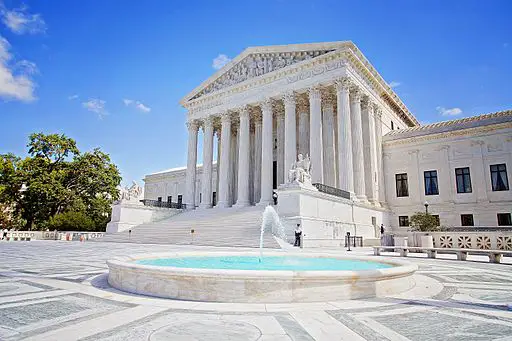The Supreme Court on Tuesday cleared the way for the Trump administration to move forward—for now—with mass layoffs across federal agencies, lifting a lower court’s order that had temporarily blocked the effort.
In an unsigned opinion, the Court ruled that President Trump’s February executive order directing federal agencies to prepare for reductions in force (RIFs) is likely lawful. While the decision doesn’t address the legality of any specific agency’s layoff or reorganization plan, it allows those plans to proceed while future legal challenges play out.
“We express no view on the legality of any Agency RIF and Reorganization Plan produced or approved pursuant to the Executive Order and Memorandum,” the justices wrote, leaving the door open for future litigation.
The ruling marks a key win for the Trump administration, which has filed several emergency appeals to the Supreme Court in response to lower court rulings that have slowed its efforts to restructure the federal workforce.
Justice Ketanji Brown Jackson dissented sharply, accusing the Court of overstepping and rushing to lift the injunction without sufficient understanding of the real-world impact.
“This was the wrong decision at the wrong moment, especially given what little this Court knows about what is actually happening on the ground,” Jackson wrote.
Justice Sonia Sotomayor shared some of Jackson’s concerns but ultimately sided with the majority, stating that it was premature to judge the legality of the plans themselves. “I join the Court’s stay because it leaves the District Court free to consider those questions in the first instance,” she wrote.
The decision overturns a May 22 injunction from U.S. District Judge Susan Illston, who had ruled that Trump’s executive order likely overstepped presidential authority and required approval from Congress. Her ruling halted reorganization efforts across more than a dozen federal agencies.
Solicitor General D. John Sauer urged the high court to act quickly, writing that federal agencies were being prevented from taking steps to “make the federal government and workforce more efficient.”
The original lawsuit challenging Trump’s order was filed by a coalition of labor unions, advocacy organizations, and local governments. They argued that allowing the layoffs to move forward before the courts ruled on the order’s legality could cause irreparable harm.
“There will be no way to unscramble that egg,” their attorneys wrote, warning of a “breakneck reorganization” that could gut key government services. The plaintiffs are represented by legal advocacy groups including Democracy Forward, Protect Democracy, the Public Rights Project, and others.
Though disappointed by the ruling, the coalition vowed to continue its legal fight, saying the decision “puts services that the American people rely on in grave jeopardy.”
This is the second time the Court has allowed the Trump administration to move ahead with large-scale federal workforce reductions. In April, it permitted the firing of thousands of probationary employees, over the dissents of Justices Sotomayor and Jackson.
In a separate request earlier this year, the administration had asked the Court to lift a previous injunction in the RIFs case, but the justices declined to act at the time, allowing the injunction to expire on its own.


